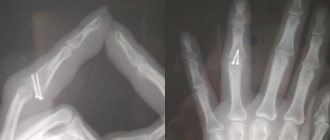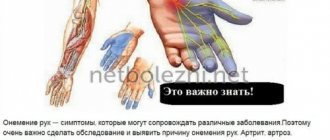Author Igor Bukker
06/25/2019 17:36 (Updated: 05/23/2021 21:45)
Science » Ecology » Man
There is an opinion that nature set the right direction for evolution - and man turned out to be its crown. However, when the process was barely started, not only did there not exist
- no video games
- no smartphones
- but there weren't even laces.
It’s much more convenient to do all this with one hand, if it has six fingers instead of five.
As studies show, the results of which were published in Nature Communications, two people who were born with six fingers cope with all this perfectly. In order not to adapt to imperfect humanity with their five fingers, these people did not resort to surgery, feeling in their gut that an extra finger could be very useful. And they came out on top!
Six-toed
Six-fingered
Six-fingered The famous Russian researcher Sergei Bogorado, known to readers of “MN” for the articles “China was invented by the Russians” (“MN” No. 16 (746) for 04/8/2008), “Who are you, Gioconda” (No. 7 (737) for 5.02. 2008), continues to open unknown pages of human history.
DEER ARITHMETICS
When we need to count something, we always divide the total into tens. The number 10 is deeply embedded in our consciousness, and we cannot imagine any other number. Why? To answer this question, we need to go back centuries, when arithmetic was just in its infancy.
Let's imagine a primitive hunter who needs to count deer in a meadow, somehow write down the resulting number and deliver this valuable information to his native tribe. The hunter is in a difficult position: speech is not developed, there is no written language, the names of numerals have not yet been invented, and the result of the hunt is a matter of life and death. The hunter brilliantly copes with the task assigned to him: he bends his finger every time he notices a deer. This time there were 5 deer. The hunter sequentially bent the fingers on one hand and received a clenched fist. The hunter not only counted the deer, but also wrote down their number - he will never open his fist until he explains to the tribe that there are exactly as many deer as there are fingers in a clenched fist.
Let's complicate the task. The scout needs to find out the size of a detachment of a hostile tribe, consisting, for example, of 33 warriors. And here our ancestor came out of the situation with honor. The scout broke several identical branches in advance and began to count in the same way as he had counted deer before. But then he reached 10 warriors. Both fists are clenched, the counter is reset to zero, but the need to continue counting remains. The scout unclenches both fists and places a twig in front of him - this is the first ten. Now that all fingers are free, you can continue counting. Soon three branches were already lying in front of the scout, and 3 fingers were bent on one hand. The counting is over. The scout cannot say how many warriors are in the enemy detachment: there are simply no such words in his vocabulary. But he can tell this to the leader of his tribe by showing him 3 twigs and 3 clenched fingers.
This is how, apparently, the decimal number system arose. We can safely say that it was based on the number 10 only because a person has only 10 fingers. However, there are no rules without exceptions.
THESE HORRIBLE TEENS
Let's move mentally to the British Isles. It was here that the popular worldwide term “teenager” was invented, which refers to teenagers from 13 to 19 years old. The origin of this term lies on the surface. All English numerals from 13 to 19 end in teen, which corresponds to the Russian dtsat: thirteen (13), fourteen (14), fifteen (15), sixteen (16), seventeen (17), eighteen (18), nineteen (19) . The question arises: why are English teenagers aged 11 and 12 not teenagers? The fact is that the English numerals eleven (eleven) and twelve (twelve) do not end in teen. It follows that these words - eleven and twelve - are not part of the decimal system, and the English system was originally duodecimal!
It is worth remembering here about a strange counting measure called “gross”, which existed in the same Great Britain. The British distinguished between a small gross, equal to 12 dozens, and a large gross, equal to 12 small grosses. It is clear that dozen, small gross and large gross are the main digits of the duodecimal system, similar to ten, hundred and thousand in the decimal system familiar to us.
All this directly and indirectly indicates the existence of a duodecimal system in ancient times. But then a logical question arises: who could create such a system? And, most importantly, why?
The only hypothesis in this regard seems, to put it mildly, far-fetched. Its authors claim that the origin of such a system is also connected with counting on fingers: the phalanges (individual joints) of the four fingers of one hand, which were fingered with the thumb of the same hand, were taken as the counting unit. This method of counting is very similar to dialing a number on a mobile phone: the manipulations are approximately the same, only much more inconvenient. Try it, and you will personally see that it is incomparably easier to bend your fingers and it is much more convenient to “save information” with the help of curled fingers. A simple and logical conclusion suggests itself: the creators of the duodecimal system were six-fingered and had 12 fingers.
WHERE DID SIX-TOEDS COME FROM?
In the summer of 2007, newspapers around the world wrote: “A boy was born in New York with six fingers on each hand and foot. Joshua Fuller, born in Brooklyn on Tuesday, is healthy and weighs 3 kg and 100 grams. A rare child abnormality known as hexadactyly is passed on through genes. The fact is that the boy's father also has a sixth finger on his left hand. Jeshua's mother, Quanah Morris, said they had ultrasounds during the pregnancy and she knew the baby would be born with extra fingers. However, the sixth toes turned out to be a surprise for the parents. The child’s fingers will be surgically removed in a couple of weeks because they serve no useful function.”
Hexadactyly (hexadaktylia; Greek hex six + daktylos finger) is a developmental anomaly: the presence of six fingers on a hand or foot. This disease is rare - approximately one case in 5,000 births. But the question is: is this a disease? Why are cases of hexadactyly not found in monkeys, our closest relatives in the animal kingdom? The answer suggests itself: modern man is a product of a mixture of five-fingered and six-fingered people. There were much fewer of the latter than the former, so their genes are suppressed and appear only occasionally, under some special conditions. How fantastic is this idea? Could such an event - a mixing of people of different types - take place in ancient times? Is there any evidence for this?
Let's turn to the most famous ancient document - the Bible. The Book of Genesis says that the descendants of Adam were long-lived. For example, Lamech lived 777 years, and the well-known Noah had children when he was 500 years old. But one day the sons of God paid attention to earthly women. “When men began to multiply on the earth and daughters were born to them, then the sons of God saw the daughters of men that they were beautiful, and they took them as wives as they chose” (Genesis 6:1-3). It also says that the descendants of this interracial mixture began to be distinguished by a shorter life expectancy - “only” 120 years, but at the same time they had great height and enormous physical strength: “At that time there were giants on Earth, especially since the time when the sons The gods began to come in to the daughters of men, and they began to bear children to them: these are mighty men, men of renown of old” (Genesis 6:4).
The Bible says nothing about the number of fingers of representatives of an extraterrestrial race. And yet there are sources that directly indicate that in ancient times six-fingered people lived on our planet.
HOMELAND OF THE GODS
40 thousand years ago, on the banks of the largest rivers of Western Asia, the Tigris and Euphrates, there existed one of the most significant civilizations of antiquity - Mesopotamia. According to ancient Assyrian legend, about 12,000 years ago the gods sent a terrible rainstorm on it. Most of the empire was flooded, cities were destroyed, and the population was reduced by 50 times. About 8,000 years ago, Northern Mesopotamia again achieved high economic and cultural development and was densely populated. Later, Sumerian tribes appeared in the south of Mesopotamia, sailing from somewhere in the southeast. The ancient Sumerians achieved significant success in astronomy, mathematics and natural science. The roller seals of the ancient Sumerians, made about 5,000 years ago, are decorated with strange symbols depicting the Sun and some mysterious objects in the sky.
But the most interesting of the ancient seals found is the one that depicts our solar system. It marks not only all the currently known planets from Mercury to Pluto, but also one more, the orbit of which passes between Mars and Jupiter. This tenth planet, which the Sumerians called Tiamat, the Iranians called Traetaon, and modern scientists called Phaethon, was destroyed 12,000 years ago due to a collision with a celestial body named Nibiru that invaded the solar system, and its fragments formed the asteroid belt.
According to the ancient Sumerian epic, the planet Tiamat was once inhabited by intelligent creatures - the Anunnaki, who were similar in appearance to humans, but had a larger stature (about 3.5 m) and six fingers and toes. In the upper reaches of the Euphrates there were numerous mines for the production of gold, silver, and copper, thanks to which these creatures later received their Sumerian name “an-nun-aki” (“lords of the underworld”). When a catastrophe occurred and their home planet perished, only those who were on Earth at that time survived. Apparently, it was at this time that the sons of God noticed that the daughters of men were beautiful. Gradually, the Anunnaki mixed with the Assyrians and passed on their knowledge to them, as well as the duodecimal counting system, which later became 60, as it was a synthesis of two systems: the decimal, earthly, and the duodecimal system of the six-fingered aliens.
According to modern scientific ideas, the sexagesimal number system appeared in Mesopotamia later than the decimal one, because numbers up to 60 are written in it according to the decimal principle. But it is still unknown when and how the sexagesimal system arose among the Babylonians. Many hypotheses have been built on this subject, and none of them is considered proven. You just met one of them. Of course, this hypothesis explains a lot, but a number of questions remain unanswered. For example, how many fingers did Adam have on his hand?
Experiments with six-fingered people
Bioengineer Etienne Burdet from Imperial College London and his colleagues carried out experiments on a 52-year-old woman and her 17-year-old son who were born with six fingers on each hand. Their extra fingers are located between the thumb and index finger, and the way they move is similar to a second thumb.
Scans and MRI of the brain showed that the extra fingers are controlled
- special brain structure
and
- muscles
- and tendons.
In practice, this means that the extra fingers do not move just like that, “for company,” as some doctors prematurely decided, but are actually under muscle control.
Six-fingered people in the Bible
The ancient custom of greeting a stranger with a handshake, which over time has grown into a familiar tradition and is firmly entrenched in our everyday life, is nothing more than a test for the presence or absence of a sixth finger.
Who are the six-fingered people?
Modern medicine says that six-fingeredness, or scientifically polydactyly, is an anatomical deviation characterized by a greater than normal number of fingers or toes in a person.
But if this is a deformity, then why was it attributed to the gods? After all, many ancient statues and monuments depict various gods and goddesses who had 6 toes on their feet. You will be surprised, but even the Russian fifty-ruble bill contains an image of such a statue.
Now, according to statistics, one baby out of every 5,000 newborns is born with six fingers.
As a rule, the sixth finger is removed immediately surgically.
And in Russia before the revolution there were entire villages of six-fingered people. By the way, “Six-fingered” is one of the nicknames of Stalin, who also had six toes.
But what’s most interesting is that the famous video “Autopsy of an Alien,” declassified in 1996, clearly shows that the number of fingers and toes is six...
And this is what, judging by the film, the control panel of the “flying saucer” that crashed in Roswell (USA) in 1947 looked like.
The famous Russian researcher Sergei Bogorado, known to readers of “MN” for the articles “China was invented by the Russians” (“MN” No. 16 (746) for 04/8/2008), “Who are you, Gioconda” (No. 7 (737) for 02/5/2008) , continues to open unknown pages of human history.
When we need to count something, we always divide the total into tens. The number 10 is deeply embedded in our consciousness, and we cannot imagine any other number. Why? To answer this question, we need to go back centuries, when arithmetic was just in its infancy.
Let's imagine a primitive hunter who needs to count deer in a meadow, somehow write down the resulting number and deliver this valuable information to his native tribe. The hunter is in a difficult position: speech is not developed, there is no written language, the names of numerals have not yet been invented, and the result of the hunt is a matter of life and death. The hunter brilliantly copes with the task assigned to him: he bends his finger every time he notices a deer. This time there were 5 deer. The hunter sequentially bent the fingers on one hand and received a clenched fist. The hunter not only counted the deer, but also wrote down their number - he will never open his fist until he explains to the tribe that there are exactly as many deer as there are fingers in a clenched fist.
Let's complicate the task. The scout needs to find out the size of a detachment of a hostile tribe, consisting, for example, of 33 warriors. And here our ancestor came out of the situation with honor. The scout broke several identical branches in advance and began to count in the same way as he had counted deer before. But then he reached 10 warriors. Both fists are clenched, the counter is reset to zero, but the need to continue counting remains. The scout unclenches both fists and places a twig in front of him - this is the first ten. Now that all fingers are free, you can continue counting. Soon three branches were already lying in front of the scout, and 3 fingers were bent on one hand. The counting is over. The scout cannot say how many warriors are in the enemy detachment: there are simply no such words in his vocabulary. But he can tell this to the leader of his tribe by showing him 3 twigs and 3 clenched fingers.
This is how, apparently, the decimal number system arose. We can safely say that it was based on the number 10 only because a person has only 10 fingers. However, there are no rules without exceptions.











